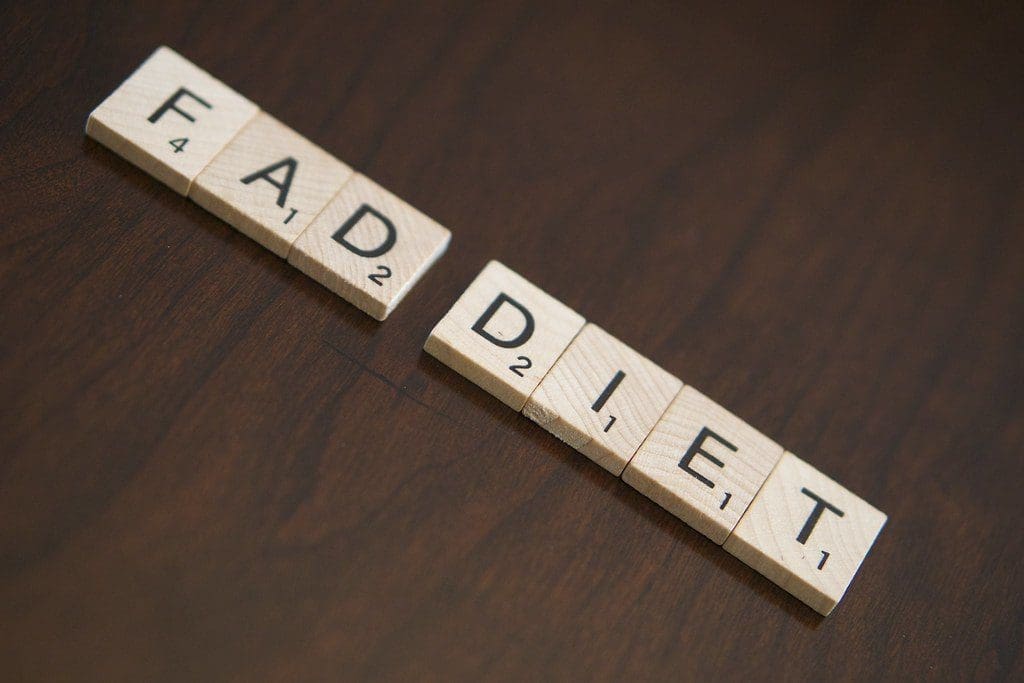Understanding Meditation Diet for Weight Management
Meditation can be a powerful tool in your weight management journey. Fostering mindfulness helps you become more aware of your eating habits, which can lead to better choices and reduced emotional eating.
Stress management is another benefit, as meditation helps lower cortisol levels. High cortisol can contribute to weight gain, especially around your midsection. Through regular practice, you can cultivate a more relaxed state of mind.
This makes you less likely to reach for food as a coping mechanism. Meditation improves sleep quality. Good sleep is crucial for maintaining a healthy weight.
Start integrating meditation daily, even if just for a few minutes. It can transform your approach to diet and weight management.
The Connection Between Meditation Diet and Weight Management
A meditation diet helps you become aware of your body’s signals. You’ll start noticing when you’re truly hungry and when you’re eating out of habit. This awareness can significantly reduce overeating.
Meditation also helps lower stress levels. High stress often leads to emotional eating and weight gain. Reducing stress reduces stress-related eating.
Meditation diet improves focus and discipline, making it easier to stick to diet plans.
Another benefit is better sleep. Poor sleep can lead to weight gain, and meditation often improves the quality of your rest.
In short, meditation promotes a balanced approach to weight management.
Benefits of Incorporating a Meditation Diet into Your Life
You gain a better awareness of your eating habits. Recognizing when you’re truly hungry helps you avoid unnecessary snacking. Meditation reduces stress, which is a common cause of emotional eating.
Lower stress levels mean fewer cravings and less overeating. You develop greater focus and discipline, making it easier to stick to your diet.
Meditation improves sleep quality, which is crucial for weight management. I won’t say it enough: better sleep translates to better metabolism, and your relationship with food becomes healthier.
You learn to enjoy your meals more, savoring each bite. A meditation diet offers a balanced approach, enhancing both mental well-being and physical health.

Mindful Eating Practices During Meditation
Incorporating mindful eating during a meditation diet can transform your relationship with food. Begin by focusing on your hunger signals.
Ask yourself if you’re truly hungry or eating out of habit. Pay attention to the flavors, textures, and aromas of your food. Chew slowly and savor each bite.
Avoid distractions, such as screens or multitasking, while eating. Be present in the moment. Notice how different foods make you feel after eating.
Do you feel energized or sluggish? This awareness helps in choosing healthier options.
Practice gratitude for your food. Recognize the effort it took to bring it to your plate. Mindful eating encourages you to listen to your body’s needs and fosters a healthier eating experience.
How Mindful Eating Can Aid in Weight Management
Eating mindfully makes you more aware of what and how much you consume. It helps you recognize hunger and fullness signals more efficiently. You eat slower, savoring each bite, leading to less eating.
Focusing on your food makes you less likely to overeat or indulge in unhealthy snacks. This heightened awareness can make you more selective and thoughtful about your food choices.
Mindful eating also reduces emotional eating by helping you understand the difference between physical hunger and emotional cravings. It’s a powerful tool for managing your weight more effectively.
Techniques for Mindful Eating
Start by creating a calm eating environment. Remove distractions like phones and TVs. Before eating, take a few deep breaths to center yourself. Focus on the appearance, smell, and texture of your food.
Chew slowly and thoroughly, savoring each bite. Pay attention to the flavors and how they change as you chew. Pause between bites to assess your level of fullness.
Listen to your body’s hunger and satiety signals.
Reflect on the origins of your food and its benefits to your body. Practice gratitude for the nourishment you receive. This process helps you develop a deeper connection with your food and eating habits.
Guided Meditation Diet for Weight Los
A guided meditation diet can be a powerful tool for shedding pounds. Using this method, you’ll receive directions from a narrator, helping you stay focused.
Begin by setting intentions for your session. Picture your ideal self and the healthy lifestyle you aspire to achieve.
Stay consistent by practicing daily, even for just a few minutes.
Remember to relax and fully engage with the process. Over time, a guided meditation diet can help modify your eating habits and improve your relationship with food.
Using Guided Meditation Apps for Weight Management
Guided meditation diet apps can greatly aid your weight management journey. These apps provide structured sessions to keep you focused.
You’ll find a variety of programs designed specifically for weight loss. They often include visualization and relaxation techniques. You can practice at any time and place, fitting into your schedule.
Many apps also offer progress tracking to keep you motivated. Regular use can help you develop a healthier relationship with food.
The guided sessions encourage mindfulness, reducing stress-related eating habits. Start by exploring popular apps to find one that suits you best. Consistency is key, so commit to daily practice for the best results.
Google has many Meditation Apps to look for. Check it out here.
Steps to Follow for Effective Guided Meditation Diet Sessions
- Choose a quiet space.
- Eliminate distractions.
- Set a time each day for consistency.
- Begin by sitting comfortably.
- Close your eyes.
- Take deep breaths.
- Focus on your breathing.
- Let thoughts drift away.
- Use headphones if available for better concentration.
- Follow the guided instructions carefully.
- Visualize the imagery described. Embrace the calming voice guiding you.
- Don’t rush the process.
- Be patient with yourself.
- Reflect on the experience afterward.
- Track your progress.
- Adjust your sessions based on your comfort.
- Practice regularly for better results.
- Patience and consistency are your allies.
Mindfulness Exercises Beyond Meditation
Mindfulness can extend beyond traditional meditation practices. Be present in each moment and incorporate mindfulness into your daily routine.
Focus on your breath while waiting in line. Pay attention to the sensations when you shower. Engage fully in conversations. This helps you connect more deeply with yourself and others.
Try mindful walking. Observe your surroundings and your body’s movement.
Mindful eating is another practice. Savor each bite and notice flavors, textures, and smells.
Practice mindfulness during chores. Feel the water when washing dishes or the warmth of clothes when folding laundry.
These exercises anchor you in the present, reducing stress and promoting weight management.
Mindful Movement Practices for Weight Management
Engage in activities that unite body and mind. Yoga and Tai Chi are excellent examples. Focus on breathing and alignment. Each movement should be deliberate and conscious.
Observe how your body feels as it moves. Pay attention to muscles and joints. Walking in nature can also be meditative. Notice the sounds, sights, and smells around you. Use this time to reflect and relax.
Even daily tasks like stretching can be mindful. Concentrate on stretching each muscle slowly and carefully. Regular practice makes your body more aware.
This awareness helps in making healthier choices. You’ll find it easier to maintain a balanced diet.
Combining Meditation with Physical Activity
You can improve your weight management by combining a meditation diet with exercise. Start your workout with a brief meditation session. Focus on your breath and set an intention.
This helps you remain present during your workout. Choose activities like yoga or Tai Chi that integrate mindfulness. During cardio or strength training, pay attention to how your body feels. Notice your movements, muscles, and breath.
After your workout, spend a few minutes in meditation. Reflect on how your body feels now compared to before. This practice boosts your mind-body connection. It also keeps you motivated and grounded in your fitness journey.
The Synergy Between Meditation and Exercise for Weight Loss
You can sharpen your focus on your fitness goals by integrating meditation with exercise. A meditation diet helps you stay present during workouts. This mindfulness improves your performance and reduces the risk of injury. When you meditate, you become more aware of your body’s signals.
You can adjust your routine to match your energy levels, which maximizes workout efficiency. Additionally, stress reduction from meditation lowers cortisol levels, helping you manage weight better.
Consistent practice enhances your motivation and keeps you committed. Combining these approaches not only boosts physical health but also nurtures mental well-being.
Best Practices for Integrating Meditation with Physical Activity
Start with a brief meditation to set your intentions before exercising. Focus on your breath and visualize a successful workout. During exercise, stay mindful of your body’s movements and sensations.
Listen to your body’s signals to avoid overexertion. Consider incorporating yoga or tai chi, as they naturally combine meditation and movement.
After your workout, end with a cool-down meditation to relax your muscles and calm your mind. Use guided meditation apps to provide structure and support.
Consistency is key—make meditation a regular part of your fitness routine. Track your progress and adjust your approach as needed. This holistic approach enhances both physical and mental well-being.

Conclusion
A meditation diet is a powerful complement to weight management efforts. Through mindful eating and guided meditation, you can develop a deeper awareness of your body’s needs.
Combining meditation with exercise creates a balanced approach to weight loss. Remember, consistency is crucial. Make meditation a daily habit. Track your progress to see what works best for you.
Utilize apps for guided sessions to keep yourself motivated. Embrace the synergy of meditation and physical activity. This holistic strategy supports both your mind and body. Stick with it to achieve lasting results and support a healthier diet.
Recap of the Benefits of Meditation Diet for Weight Management
Meditation helps you manage stress, which often leads to unhealthy eating habits. Regular practice makes you more mindful of your food choices and portion sizes.
This awareness can prevent overeating and reduce cravings. Meditation also improves your emotional health, helping you stay motivated throughout your weight loss journey.
You gain better control over impulsive behavior, making it easier to stick to your diet. By incorporating meditation, you find a balanced approach to both mental and physical health.
Consistency in your practice is key. Over time, you will notice positive changes in your eating habits and overall well-being.
Tips for Sustaining a Meditation Diet Practice to Support Your Health
Set a specific time for meditation each day. Choose a quiet space where you won’t be interrupted. Use meditation apps to guide you. Start with short sessions and gradually increase the duration.
Keep track of your progress in a journal. Combine meditation with deep breathing exercises. Stay consistent, even on busy days. Join a meditation group for support.
Reflect on how meditation positively affects your eating habits. Reward yourself for staying committed. Remember, it’s a journey, not a race. Adapt your practice to fit your lifestyle.









Be First to Comment